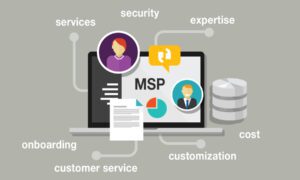One of the first things you learn in business is how important it is to understand the market – namely the needs of your customer. In the case of the EB-5 Green Card process, it’s a very similar situation with different factors.
You can qualify if and when you meet the needs of the U.S. government, particularly in respect to creating a project that benefits the U.S. economy, in very precise ways.
In this article, we’re going to review some tips on investing in a project that will make your application process go smoothly.
How Does the EB-5 Green Card Process Work?
The EB-5 Green Card process allows potential U.S. citizens to invest in a “new commercial enterprise” as part of their qualification requirements. While the wording is somewhat vague, we can glean a lot from studying the official government website and paying attention to their wording.
As you might know by now, you can either choose to work through a Regional Center or make a direct investment. Just know that even if you invest $1,800,000 (or $900,000) in a “new commercial enterprise”, there are more criteria that will apply.
For more on the route to US citizenship, read this checklist of items to prepare.
1) Always maintain strong control over the business.
From the beginning, you will be expected to engage in the management of the business and create at least 10 full-time jobs for U.S.-based workers.
According to the U.S. Citizenship and Immigration Website, you can start a business, buy an existing business, or invest money in an existing business. As long as the business is for-profit and you’re at risk, you can invest in any sole proprietorship, partnership, holding company, or joint venture. You can even invest in a corporation, whether it’s publicly or privately owned.
But it has to be hands-on management, so you can make sure that the business operates lawfully, and that it qualifies as a “new commercial enterprise.”
Check our article on management and leadership and learn a quick way to grow your business.
2) Do market research and make sure the business grows.
Don’t invest any money you’re not prepared to lose, right? The only problem is, your application for citizenship can be affected by the growth of the business.
For one thing, you can’t just buy an existing business that’s already coasting. You must restructure or reorganize the business as the new manager/owner, and fundamentally change the business so that it grows.
Your aim is to go for a 40% increase in the net worth of the business, as well as a 40% increase in employees. So if there are already employees working at the business, they wouldn’t count towards the 10-personnel minimum.
Direct investment also requires that new jobs are “directly created” by the business, and not indirectly. As in, the business name employs ten workers.
It’s not enough to invest money in a good business. You must make it grow and make the entity your long-term project in every aspect.
3) Aim for a “Targeted Employment Area.”
Location is everything in business and it’s no different with the EB-5 application. In fact, choosing a targeted employment location can even qualify you for a smaller investment – the $900,000 option.
What makes a “targeted area” is either a part of the city where unemployment rates are high or a rural area that needs some thriving business.
But you can’t assume anything, because you have to go with a targeted area that’s included within the scope of the Immigration and Nationality Act.
For example, a “rural area” must not be close to a major metropolitan area. The area also cannot be located nearby a city or even a town that has over 20,000 residents. When they say “rural” they mean pretty deep rural. Still, you have to “regularly” provide goods and services that will help create jobs in the community.
As far as city or town areas go, you must choose a location that has a high unemployment rate – that is, 150% of the national average.
Follow the Most Recent EB-5 Green Card Process Directions
The EB-5 Investor Program has had some lapses as of late, particularly in the option to invest in a Regional Center. For a while, that meant direct investment was the only option, but laws are changing again as of 2022! Be sure to follow directions closely and keep up to date with any 2022 changes!



































